Email Automation
Jira Automation Based on Specific Email Address
Need to streamline Jira workflows? Discover how automation based on specific email addresses can revolutionize your productivity.
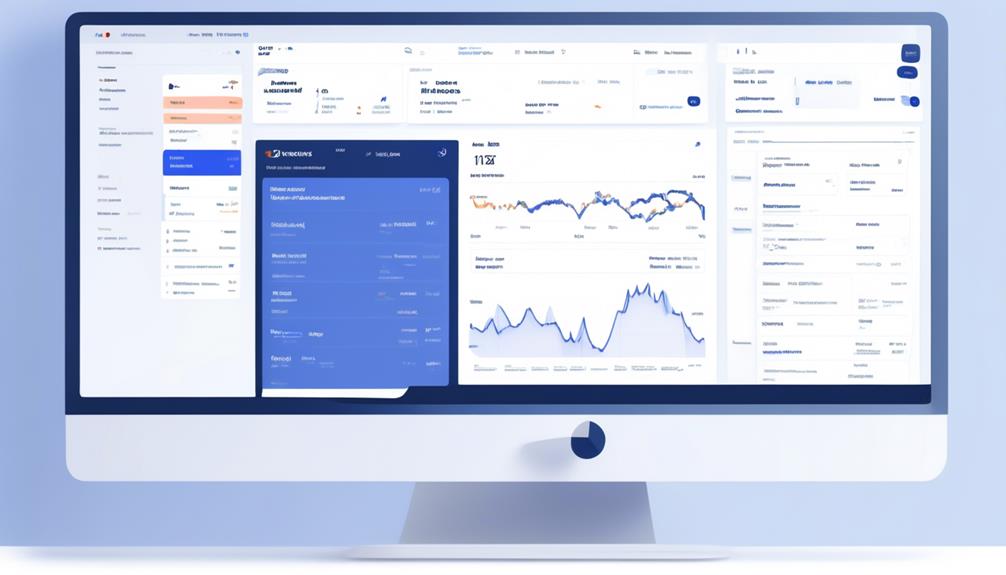
We’ve all experienced it – sinking under a deluge of emails, frantically looking for methods to optimize our Jira processes.
What if I told you there's a way to automate specific actions in Jira based on the recipient of an email? Imagine the time and effort that could be saved if Jira could automatically assign tasks or trigger certain workflows based on the email address it receives.
With the potential for increased efficiency and productivity, it's worth exploring how Jira automation can be tailored to specific email addresses, opening up new possibilities for seamless integration and workflow optimization.
Key Takeaways
- Jira Automation offers tools to automate tasks and streamline processes.
- Automation rules can be set up based on email addresses.
- Specific email addresses can trigger actions like creating issues or updating tasks.
- Automation reduces manual intervention and human error.
Understanding Jira Automation
How can Jira Automation streamline our workflow and improve efficiency?
Jira Automation offers a powerful set of tools to automate repetitive tasks and streamline processes. By leveraging automation rules, a registered user can add specific email addresses to trigger actions within the Jira platform. This allows for the seamless integration of email-based actions into the existing workflow, reducing the need for manual intervention and increasing overall efficiency.
When a specific email address is added to the automation rule, Jira Automation can automatically create issues, update existing ones, assign tasks to team members, or send notifications based on the content of the received email. This level of automation not only saves time but also reduces the likelihood of human error, ensuring that critical tasks are handled promptly and accurately.
Understanding the capabilities of Jira Automation in relation to specific email addresses empowers teams to create a more efficient and responsive workflow. With the ability to integrate email-based actions seamlessly, teams can focus on high-value tasks while Jira Automation handles the routine processes.
Configuring Email Address Triggers

Configuring Email Address Triggers in Jira Automation extends the capability to seamlessly integrate email-based actions, further enhancing workflow efficiency and responsiveness.
When setting up email triggers, there are several key considerations to keep in mind:
- Recipient-Based Automation: Email triggers allow for automation rules to be set up based on the recipient of the email, enabling actions such as assigning issues or updating custom fields.
- Mail Handler Association: It's crucial to associate the mail handler and automation rule with the same Jira project to ensure that the email address triggers function as intended.
- Need for Mail Handler Extension: In some cases, a mail handler extension may be required to achieve automation based on the recipient's email address. Exploring potential workarounds can help overcome any limitations.
- Efficiency and Accuracy: Configuring Email Address Triggers can streamline the automation of specific actions based on the recipient's email address, ultimately enhancing efficiency and accuracy in issue management, particularly in the context of Email Notifications for next-gen projects.
Understanding these aspects is vital for proficiently configuring email address triggers in Jira Automation.
Creating Automation Rules
We can establish automation rules in Jira to streamline and automate specific actions based on the recipient's email address. By creating automation rules, we can ensure that emails sent to specific recipient addresses trigger predefined actions in Jira, such as creating issues, assigning them to specific team members, or updating issue fields. Below is a table highlighting the key considerations for creating automation rules based on email addresses:
| Consideration | Description |
|---|---|
| Configuring mail handlers | Ensure that mail handlers are set up to receive and process emails sent to specific recipient addresses. |
| Assigning issues based on email domain | Automation rules can be configured to assign issues based on the reporter's email domain or specific conditions. |
| Handling project-specific email addresses | It may be necessary to set up mail handlers and automation rules for the same project to ensure proper functionality. |
| Adjusting specific conditions | Considerations and limitations, such as adjusting specific conditions, are important when configuring automation rules. |
| Project Level Email Notifications | Configure project-level email notifications to ensure that the right stakeholders are informed of issue updates. |
Utilizing Specific Email Addresses
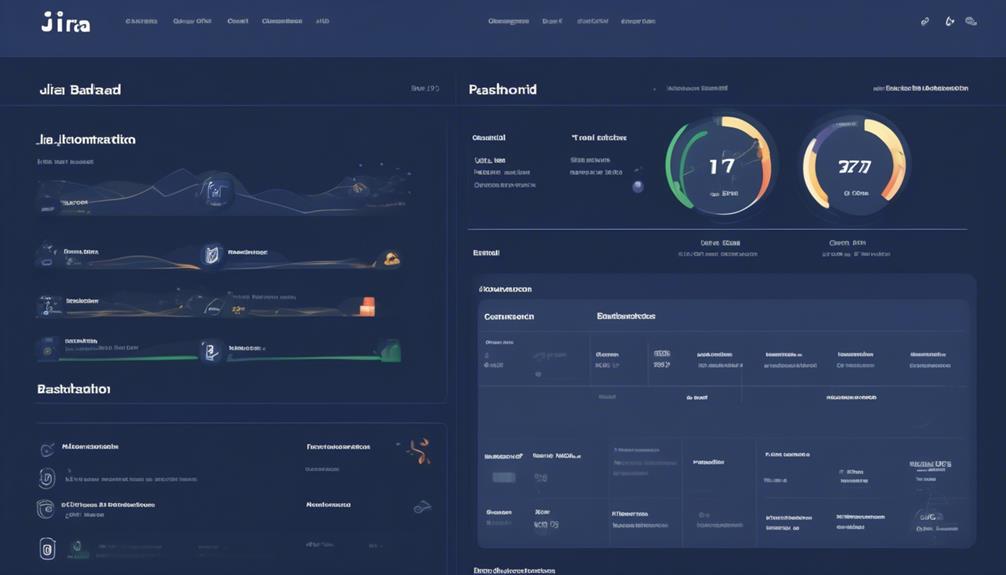
When utilizing specific email addresses, we can set up filtering rules to trigger automation based on the recipient's email address. This allows for targeted actions and responses, ensuring that the right processes are initiated based on the recipient's identity.
Email Address Filtering
To filter emails based on specific email addresses, utilize email address filtering to forward emails to JIRA.
When setting up automation rules, it's imperative to ensure that the original sender is maintained as the sender in JIRA, not the original recipient.
Additionally, consider using a mail handler extension to achieve automation based on the email recipient.
To optimize automation, it's crucial to associate the mail handler and automation rule with the same project when configuring automation rules for job creation via email.
Automation Triggers
By utilizing specific email addresses as automation triggers, JIRA can be configured to perform targeted actions based on the recipient's email address. Automation triggers enable the efficient handling of incoming emails, allowing for rapid assignment of issues and the execution of specific actions based on the recipient's email address.
This capability ensures that fast answers from people can be facilitated within JIRA, streamlining communication and issue resolution. Additionally, the original sender's identity is preserved in JIRA, maintaining transparency and accountability.
To achieve this level of Jira automation, configuring incoming mail handlers and automation rules may be necessary, potentially requiring the use of mail handler extensions and specific workarounds.
Ultimately, leveraging automation triggers based on specific email addresses can significantly enhance issue management and communication within JIRA.
Triggering Actions With Email Integration
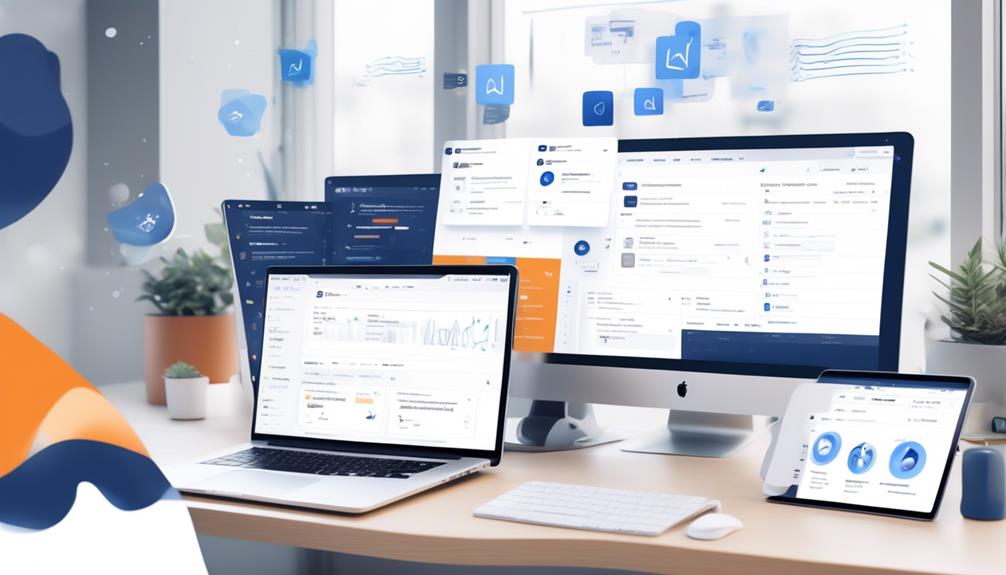
When it comes to triggering actions with email integration, it's essential to understand how email-triggered automation works in JIRA.
We can explore how JIRA's email integration allows for specific address automation, enabling us to streamline processes and enhance efficiency.
Email Triggered Automation
Automating actions triggered by emails in JIRA streamlines issue management and communication processes. When emails from multiple addresses are forwarded to a registered JIRA email, rule-based actions can be executed.
Automation rules can be created to handle emails based on the recipient, such as forwarding them to specific responsible persons. The original sender is displayed as the sender in JIRA, and the forwarding service sends the email unaltered.
Furthermore, automation can assign issues based on the original sender (Reporter) and can be customized for specific conditions and actions.
Setting up email triggers and rules in JIRA can greatly enhance efficiency and ensure that relevant information is seamlessly integrated into the system.
Jira Email Integration
Email integration in Jira streamlines issue management and communication processes. It allows automation of rules based on specific email recipients.
With Jira email integration, emails can be forwarded to Jira. Rules can be created to execute actions based on the email recipient. These actions may include assigning issues or triggering specific actions.
It's important to note that the original sender is maintained as the sender in Jira, not the original recipient, when utilizing email integration for automation.
Automation rules can be set up to assign issues based on the reporter's email address. However, to achieve automation based on the email recipient, a mail handler extension and exploring workarounds may be necessary.
Jira email integration offers a powerful way to streamline processes and improve efficiency in issue management.
Specific Address Automation
Using specific address automation in Jira triggers actions based on the recipient's email address, enhancing efficiency in issue management and communication processes. This feature allows for creating rules based on the recipient email address, not just the sender, ensuring that emails sent to specific addresses can trigger specific actions.
The original sender is maintained in JIRA, and the forwarding service seamlessly integrates with JIRA automation. Configuring mail handlers with specific catch email addresses triggers desired actions, associating them with relevant projects.
This method streamlines issue management and communication by automating tasks based on the recipient's email address, optimizing workflow and ensuring timely and accurate responses.
- Specific address automation creates rules based on recipient email addresses.
- It ensures that emails sent to specific addresses trigger specific actions.
- Original sender information is maintained in JIRA.
- Configuring mail handlers with specific catch email addresses triggers desired actions.
Optimizing Jira Workflow Efficiency
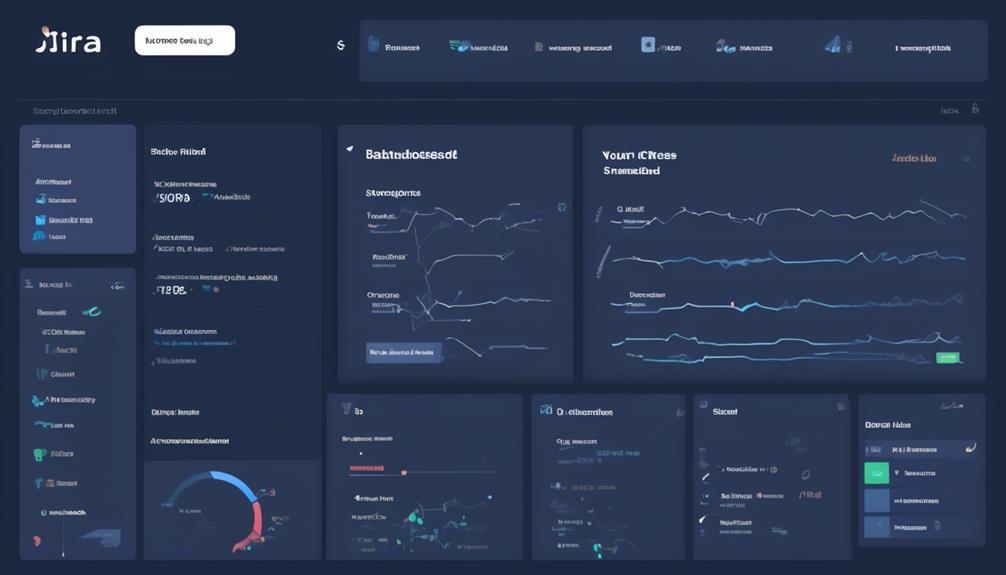
To enhance the efficiency of Jira workflows, organizations can implement automation rules tailored to specific email addresses, streamlining issue tracking and resolution processes. By optimizing Jira automation based on email addresses, organizations can ensure that incoming emails are directed to the designated responsible persons or trigger specific actions based on the recipient's address. This targeted approach allows for the maintenance of the original sender as the Reporter of the issue, facilitating streamlined workflow processes. Additionally, organizations can optimize the redirection of multiple email aliases to the same inbox or Jira email handler through automation based on the recipient's email address, enabling efficient and targeted actions. Setting up automation rules for job creation via email involves configuring incoming mail handlers and ensuring association with the relevant project, further streamlining the process of creating or updating tickets. Moreover, by automating email sending in Jira, organizations can save time, ensure consistent communication, reduce manual errors, and enhance collaboration and efficiency in issue tracking and resolution.
| Jira Automation | Email Address |
|---|---|
| Streamlines issue tracking and resolution processes | Tailored automation based on email addresses |
| Maintains original sender as the Reporter | Optimizes redirection of multiple email aliases |
| Configures incoming mail handlers for job creation | Saves time and enhances collaboration |
This optimized approach to Jira automation based on email addresses significantly contributes to the efficiency of workflow processes, ensuring targeted and streamlined actions.
Implementing Email-Based Automation
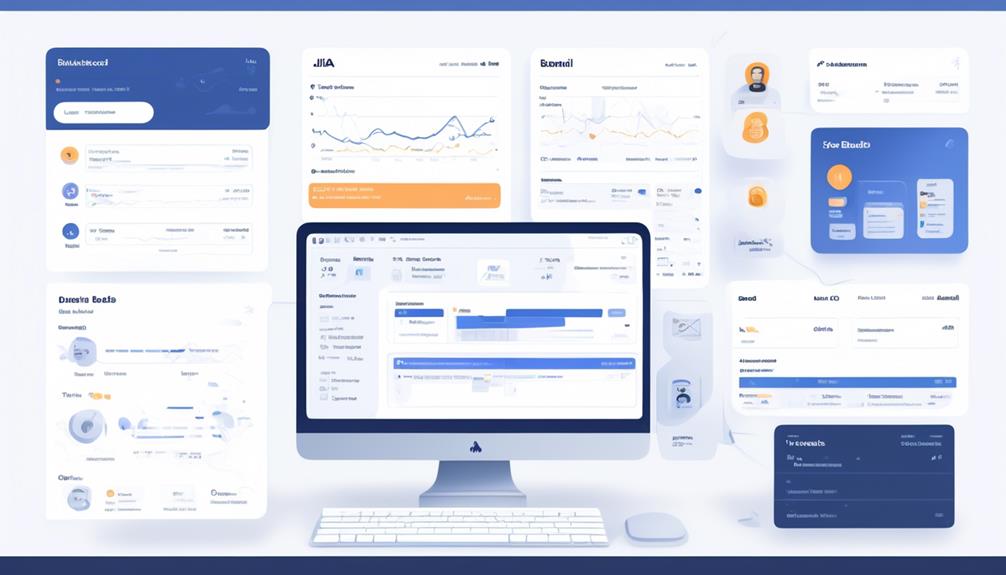
After evaluating the potential benefits and limitations of email-based automation, we concluded that implementing targeted rules based on the email recipient is crucial for streamlining workflow processes in Jira. When considering implementing email-based automation in Jira, several key factors should be taken into account:
- Forwarding Specific Emails: Utilize automation to forward specific emails to designated responsible persons, ensuring prompt attention to critical issues.
- Maintaining Original Sender as Reporter: Implement automation to maintain the original sender as the Reporter in Jira, guaranteeing accurate attribution of the issue, even when emails are forwarded.
- Assigning Issues Based on Original Reporter: Utilize automation to assign issues based on the original Reporter, setting up triggers, conditions, and actions for each Reporter based on specific conditions.
- Recipient-Based Actions: Implement automation based on the email recipient, allowing for actions to be performed depending on the recipient of the email, such as utilizing mail handler extensions or exploring workarounds for achieving this automation.
Enhancing Productivity With Email Triggers
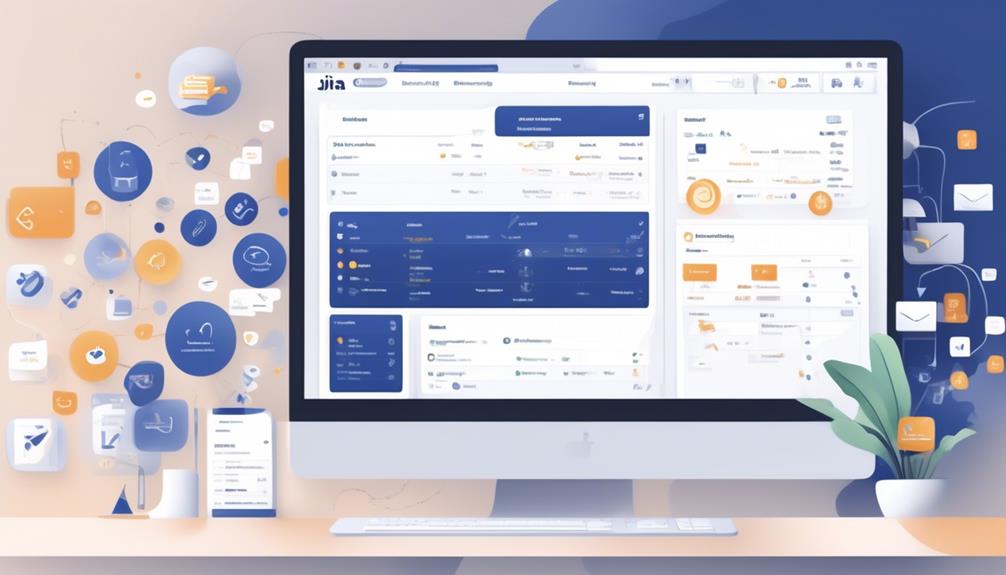
Let's explore how utilizing email triggers in Jira can enhance productivity and streamline workflow.
By automating actions based on email recipients, we can efficiently update custom fields, assign issues, and ensure consistent communication.
These email automation benefits can significantly improve the efficiency of issue management and enable targeted messaging tailored to specific needs.
Email Automation Benefits
Enhancing productivity with email triggers can significantly streamline workflow processes and improve targeted responses. Email automation benefits in Jira include:
- Efficiency: Automating actions based on email recipients ensures that tasks are promptly addressed and assigned to the relevant stakeholders, saving time and effort.
- Clarity and Accountability: Assigning issues based on the reporter through automation helps maintain transparency and accountability, optimizing the workflow and issue resolution process.
- Time-Saving: Configuring incoming mail handlers in Jira streamlines the process of creating or updating tickets when an email is received, enhancing productivity.
- Personalized Communication: Automating email sending not only saves time and reduces errors but also enables personalized and targeted communication, fostering collaboration and enhancing overall productivity.
The implementation of email automation benefits in Jira can significantly improve efficiency and streamline processes, aligning with the needs of organizations seeking enhanced productivity.
Triggered Jira Actions
We have found that implementing Triggered Jira Actions for email automation has significantly enhanced productivity and streamlined workflow processes. By configuring mail handlers and automation rules within the JIRA system, specific email addresses can trigger actions such as issue assignment and custom field updates. This level of Jira automation allows for efficient tracking and assignment based on the original sender, ultimately streamlining the process. The table below provides an overview of the benefits of Triggered Jira Actions in enhancing productivity through email triggers:
| Benefits | Description |
|---|---|
| Efficient Tracking and Assignment | Maintains original sender as the Reporter in JIRA, facilitating issue assignment based on the original sender |
| Custom Rules for Job Creation and Field Updates | Creation of rules for job creation and custom field updates based on email domain or specific email addresses |
This approach ensures that Jira automation based on specific email addresses optimizes workflow processes and productivity.
Customizing Automation for Email Addresses
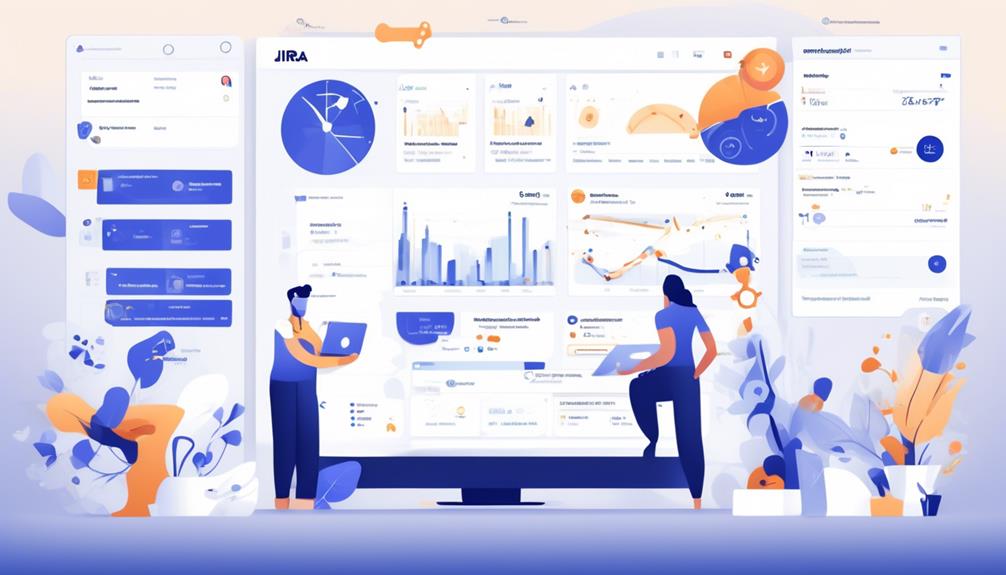
To customize automation for specific email addresses, considering the use of mail handler extensions may provide a workaround for achieving targeted automation based on email recipients. When customizing automation for email addresses in Jira, there are several key strategies to consider:
- Utilizing mail handler extensions: Investigate the use of mail handler extensions to create customized automation rules based on specific email addresses, enabling the forwarding of emails to responsible individuals and maintaining the original sender as the Reporter in JIRA.
- Assigning issues based on email domain: Leverage conditions and actions in Automation Rules to assign issues based on the Reporter's email domain, streamlining the issue management process.
- Updating custom fields based on email domains: Set up rules to automatically update custom fields in Jira issues based on specific email domains, enhancing efficiency and organization in handling incoming emails.
- Exploring workarounds for targeted automation: Explore potential workarounds and extensions to customize automation for email addresses, allowing for more tailored and effective management of Jira tasks and communications.
How can I set up Jira automation based on a specific email address?
To set up Jira automation based on a specific email address, you can create a jira automation email rule. By navigating to Jira settings > System > Automation Rules and setting up a new rule, you can specify the conditions to trigger automation based on the email address and automate various actions within Jira.
Leveraging Email Integration in Jira
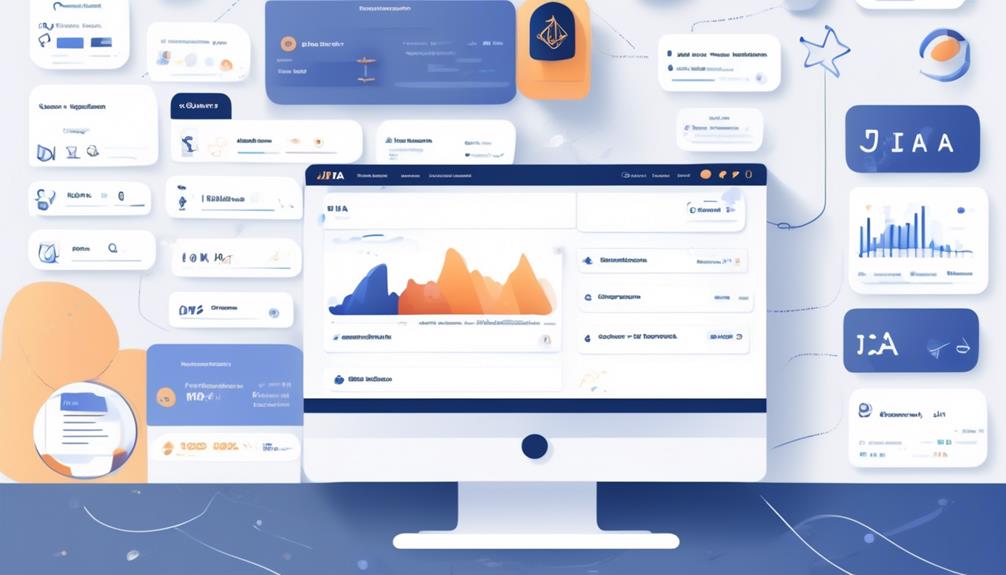
By leveraging email integration in Jira, we can efficiently automate issue forwarding and streamline communication processes based on specific recipient addresses. This integration allows for seamless assignment of issues and updating of custom fields by leveraging the email domain or recipient's address.
Automation rules can be set up to send targeted and personalized emails using custom field values within Jira, ensuring timely and consistent notifications to both internal and external stakeholders. Leveraging email integration in Jira provides an efficient way to manage and communicate with a large number of recipients by automating the email sending process. This not only saves time but also reduces the margin for error in communication, leading to enhanced productivity and accuracy in handling issue-related correspondence.
Additionally, the ability to customize and automate email communication based on specific recipient addresses adds a layer of personalization and relevance to the communication process, fostering better engagement and understanding among stakeholders.
Frequently Asked Questions
How Do I Automatically Create Tickets in Jira From Email?
We can automatically create Jira tickets from emails by setting up automation rules. This ensures timely ticket creation and reduces manual errors.
The original sender of the email is maintained as the Reporter in Jira, allowing for accurate attribution. Additionally, custom fields can capture email addresses for targeted communication.
This automation saves time and streamlines the ticket creation process.
Can Jira Integrate With Email?
Yes, Jira can integrate with email.
It allows for automated handling of emails, such as creating or updating tickets based on specific email addresses.
This functionality streamlines communication and issue tracking by seamlessly integrating email correspondence with Jira's ticketing system.
With Jira's incoming mail handlers, we can configure automation rules tailored to different email addresses, enhancing flexibility and efficiency in managing incoming requests.
How Do I Send an Email Assignee in Jira Automation?
We send an email to the assignee in Jira automation by configuring automation rules to assign issues based on specific triggers, conditions, and actions.
This ensures that emails are forwarded to the appropriate assignee based on the recipient, not the sender.
It's important to associate the mail handler and automation rule with the same project for effective email handling.
We may need to explore workarounds and consider using mail handler extensions for this purpose.
How Do I Set up Email Automation?
We set up email automation by configuring rules for forwarding emails to JIRA based on specific recipient addresses.
This process involves creating automation rules that trigger actions based on the recipient's email address.
Additionally, we can utilize a mail handler extension if necessary to associate mail handling with the automation rules.
It's important to consider limitations, such as associating mail handler and automation rules with the same project.
Conclusion
In conclusion, by leveraging Jira automation based on specific email addresses, we can streamline our workflow and improve productivity. Configuring email address triggers and creating automation rules allows us to trigger actions seamlessly through email integration.
With the help of mail handler extensions and the supportive Jira community, we can customize automation for specific email addresses, ultimately enhancing our overall efficiency.
Let's continue exploring the possibilities of email-based automation in Jira for even greater optimization.
Erik – Email, SEO, AI Expert Writer Erik is the strategist, the thinker, and the visionary. His role at Influenctor is pivotal in integrating SEO with AI-driven content strategies. With an extensive background in email marketing and a profound understanding of search engine algorithms, Erik develops innovative strategies that elevate our client’s online presence. His work ensures that our content is seen, felt, and remembered.
Email Template
5 Travel Email Templates for Your Next Adventure
Lure your audience into a world of wanderlust with our captivating travel email template – discover the secret to irresistible travel emails.

You’ve dispatched a decent number of travel-related emails, and to be frank, the outcomes haven’t been impressive. However, don’t worry; we have the perfect solution for you.
Our travel email template is designed to take your travel emails from mundane to magnificent, and we're here to walk you through it step by step.
From crafting the perfect subject line to selecting the most enticing images, our template has got you covered.
But that's just the beginning – there's so much more to explore in the world of travel email templates, and we can't wait to show you.
Key Takeaways
- Using a travel email template can streamline the process of creating captivating and personalized promotional content.
- Incorporating high-quality photos and AMP carousels can make a significant impact on potential customers and foster deeper engagement.
- Banners in travel email templates grab the reader's attention, convey essential information, and evoke wanderlust.
- Editing photos in email templates can enhance visual appeal and complement the design, making marketing campaigns more effective.
Benefits of Using a Travel Email Template
Utilizing a travel email template can streamline the process of creating captivating and personalized promotional content for engaging with potential travelers. These HTML email templates offer ready-to-go designs for leisure and travel needs, making it easier to stand out in the competitive travel industry. With the high return on investment that comes from utilizing travel email marketing, businesses can effectively reach their target audience and drive conversions.
Unlayer's email templates provide advanced features like personalized merge tags and custom HTML code, allowing for seamless personalization and mobile responsiveness. This is crucial for engaging with customers who are increasingly accessing their emails on mobile devices. The drag & drop editor offered by Unlayer enables the easy creation of beautiful, mobile-ready HTML email templates for travel and leisure.
Additionally, these templates make it effortless to promote travel products and services, enhancing the overall marketing strategy.
Tips for Creating an Effective Template
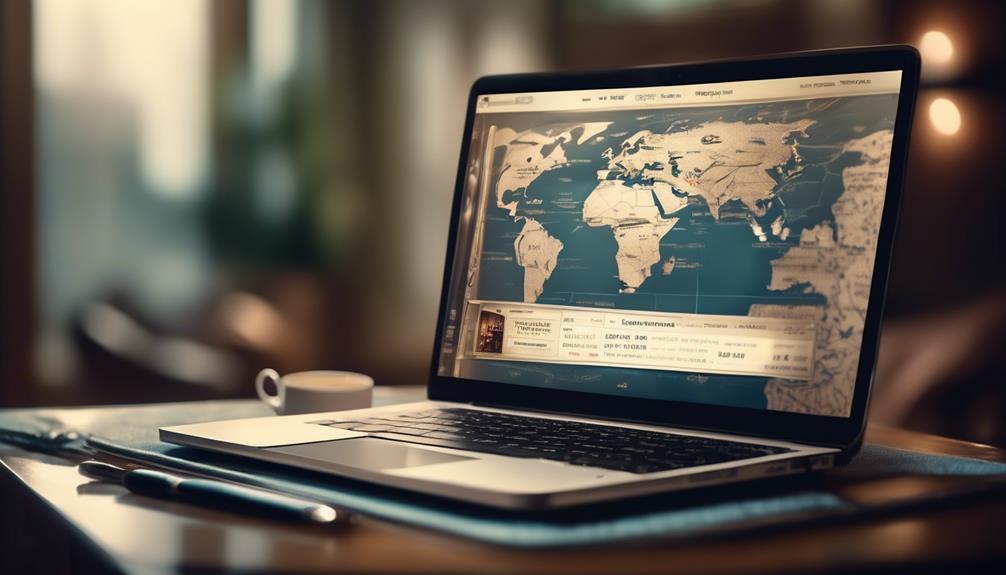
Creating an effective template for travel emails requires careful consideration and attention to detail in order to capture the attention of potential travelers and inspire them to take action.
High-quality photos play a crucial role in travel email templates, as they can make a significant impact on potential customers. Utilizing AMP carousels to showcase multiple breathtaking photos of the destination can create an immersive and visually appealing experience.
Additionally, editing photos to complement the entire email design is essential for creating a professional and aesthetically pleasing travel email template.
Incorporating short videos to promote resorts can also make travel email templates stand out, providing a dynamic and engaging element for potential travelers.
Furthermore, utilizing smart-elements to create quick and reusable product cards for travel email templates can streamline the process and ensure consistency.
When developing email marketing strategies for travel agencies, these tips can help in creating compelling and effective travel email templates that resonate with the audience and drive engagement and action.
Working With Banners for Templates
When designing travel email templates, we enhance their visual appeal by incorporating captivating banners that entice and engage our audience from the moment they open the email. Banners play a crucial role in grabbing the reader's attention and conveying essential information about travel offers, promotions, or destinations.
To create effective banners for email templates, we utilize the drag-and-drop email editor to seamlessly integrate visually stunning images and compelling copy. These banners are strategically placed to attract the reader's gaze and direct them towards the desired call-to-action, such as exploring exclusive travel deals or visiting landing pages for more details.
Our email templates for travel are meticulously designed to feature banners that evoke wanderlust, using high-quality imagery and enticing language to spark the recipient's interest. Whether it's promoting a tropical getaway, a European adventure, or a luxurious cruise, our banners serve as visual invitations to explore the possibilities of travel.
Utilizing AMP Carousels for Travel

As we aim to captivate and inspire our audience with visually stunning travel email templates, we've integrated AMP carousels to showcase multiple breathtaking destination photos, fostering deeper engagement and igniting wanderlust.
The utilization of AMP carousels in our professionally designed emails allows us to display 5, 10, or even 15 stunning images of the travel destination, providing recipients with a captivating visual journey. By implementing Stripo's AMP image carousel for free travel email templates, we can enhance user engagement, making our marketing campaigns more effective.
The provided link offers a convenient way to incorporate AMP carousels into our responsive emails and landing pages, ensuring that our audience is presented with an immersive and visually appealing experience.
- Our travel agency can utilize AMP carousels to showcase various destinations, enticing recipients to explore further.
- By incorporating AMP carousels, we can significantly boost user engagement and interest in our travel destinations, ultimately driving conversions and customer satisfaction.
Editing Photos for Email Templates

Enhancing the visual appeal of email templates through photo editing is essential for captivating our audience and conveying the allure of our travel destinations. We aim to grab the attention of our subscribers and entice them to explore the wonders of various destinations. Utilizing editing tools and filters can significantly enhance the overall quality of the images we incorporate into our emails and landing pages. By adjusting the lighting, color balance, and sharpness, we can ensure that the photos are vibrant and engaging.
In addition to photo editing, the text accompanying the images plays a crucial role in capturing the audience's imagination. Incorporating captivating and enchanting language can complement the design and photos in the email template, further enhancing the overall appeal.
Furthermore, utilizing AMP image carousels can be a powerful tool in showcasing multiple breathtaking photos of a destination, allowing the audience to immerse themselves in the beauty of the location. This approach is particularly effective for travel agents looking to promote various destinations and offer enticing visuals to potential customers seeking free travel opportunities.
Frequently Asked Questions
How Do You Write an Email for Travel?
We write engaging travel emails by captivating customers with high-quality photos and videos. Our templates feature AMP carousels to showcase multiple breathtaking destinations and Stripo's smart-elements for quick creation of product cards.
We edit photos to complement the design and insert videos to promote resorts. With our free travel email templates, we ensure that each email stands out, attracting new customers and sparking their desire to travel.
How Do I Send a Travel Request via Email?
We send travel requests via email by crafting a clear and concise message that includes our travel dates, destination, purpose, and any specific requirements. We also ensure to include all relevant details, such as budget and preferred accommodations, to facilitate a swift and accurate response.
Additionally, we attach any necessary documents, like travel authorizations or visa applications, to expedite the process.
This approach helps streamline the travel request procedure and ensures a smooth planning process.
How Do I Write a Travel Request?
We write a travel request by capturing the essence of the destination with high-quality photos and a captivating banner.
We ensure enchanting text complements the imagery and design, utilizing AMP carousels to showcase multiple breathtaking photos.
Additionally, we enhance the request by incorporating videos to promote resorts and showcase experiences.
This approach ensures our travel request is engaging, informative, and visually stunning, leaving a lasting impression.
How Do You Introduce a Travel Agency in an Email?
We introduce a travel agency in an email by emphasizing our experience and competence in providing national and international travel services. We assure potential clients of the best value for money through our prompt and competent services.
We highlight the number of years of experience our agency and agents have in the travel industry. Our email encourages prospective travelers to plan their trip with us and conveys gratitude for considering our services.
Conclusion
In conclusion, using a travel email template is like having a magic wand for creating captivating and engaging emails.
It's the secret ingredient that turns plain text into a visual feast, leaving your audience spellbound and eager to pack their bags and head to their dream destination.
With the right template, you can transport your readers to far-off lands and create an unforgettable experience that keeps them coming back for more.
So why wait? Let the magic begin and watch your email engagement soar!
Natali – Editor in Chief (Strategy and Mastery, AI Expert) Natali, our Editor in Chief, is the driving force behind our content’s strategic direction. With a keen eye for detail and a deep understanding of market trends, Natali ensures that our content is top-notch and strategically aligned with our client’s goals. Her expertise in AI helps to seamlessly integrate advanced technology into our marketing strategies, pushing the boundaries of conventional marketing.
How to Write Email
Vacation Email Etiquette: How to Write with Politeness
Struggling to craft the perfect vacation email? You'll want to keep reading for essential tips and strategies to nail it.

So, we’re all familiar with the routine of composing a professional out-of-office email, correct? Actually, perhaps not.
While the idea of taking time off sounds like a breeze, the art of communicating that to your colleagues can be a bit more complex.
But fear not, because we've got some key tips and strategies to help you navigate the ins and outs of drafting the perfect out-of-office message.
Whether it's setting clear expectations or ensuring your absence won't disrupt the team's workflow, there's a lot to consider when it comes to mastering the art of the vacation email.
Key Takeaways
- Include specific details such as dates of absence, expected return date, and urgent instructions in the vacation email.
- Clearly communicate dates of absence in the out-of-office message and provide alternative contacts for urgent matters.
- Maintain a professional tone in all communication and convey professionalism and reliability in the out-of-office message.
- Understand company vacation policy and use appropriate request email templates, while also considering the impact on workload and showing consideration for the team when requesting time off.
Essential Components of a Vacation Email
When crafting a vacation email, it's essential to include specific details such as the dates of your absence, your expected return date, and any necessary instructions for urgent matters. A concise subject line should indicate that it's an informal vacation request. In the body of the email, maintain a professional tone to ensure a smooth and clear communication process.
In the first paragraph, clearly state the purpose of the email – to request vacation time. Provide the dates of your absence, including the start and end dates, and your expected return date. This information helps the recipient understand the duration of your absence and plan accordingly.
Additionally, if there are any specific instructions for urgent matters during your absence, make sure to include them in the email to ensure that any critical issues can be addressed in your absence.
Crafting a Professional Out-of-Office Message
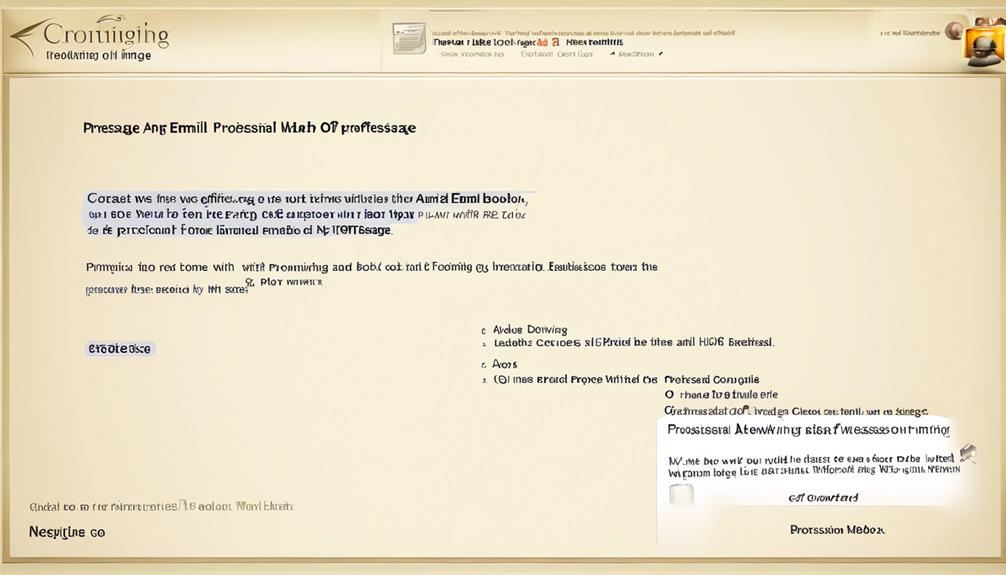
After requesting vacation time, it's important to also craft a professional out-of-office message that clearly communicates the dates of absence and provides alternative contacts for urgent matters.
When writing the out-of-office message, it's essential to ensure that it conveys a sense of professionalism and reliability. Clearly state the dates of your absence and provide an alternative contact in case of urgent matters.
It's good practice to express gratitude for understanding and cooperation during your leave. Additionally, offer to follow up on any pending matters upon your return to reassure colleagues and clients that their issues will be addressed promptly.
While crafting the message, it's important to adhere to company communication standards and policies to maintain consistency in tone and content. Avoid sharing unnecessary personal details in the out-of-office message to maintain a professional tone.
Writing a good out-of-office message is crucial as it reflects your commitment to professionalism and ensures that important matters are attended to in your absence.
Setting Expectations With Colleagues and Clients
To ensure smooth communication during my absence, we will clearly communicate our availability and response times for emails and calls to colleagues and clients. It's crucial to set realistic expectations and maintain a professional tone in all communication. Here is a simple table to help you craft a professional email and set expectations with your colleagues and clients:
| Information to Include | Example |
|---|---|
| Availability during vacation | I will be out of the office from [start date] to [end date]. |
| Response times for emails and calls | I will have limited access to emails and will respond within 24-48 hours. |
| Delegated responsibilities | Please contact [colleague's name] for any urgent matters. |
| Contact information | For immediate assistance, please reach out to [colleague's name] at [contact information]. |
Effective Examples of Out-of-Office Messages

Crafting effective out-of-office messages is an essential aspect of maintaining clear communication while on vacation. When writing these messages, it's important to be polite and professional while providing the necessary information. Here are three effective examples of out-of-office messages that you can use as a template for your own:
- 'I am currently out of the office and will return on [date]. For urgent matters, please contact [colleague's name] at [colleague's email].'
- 'Thank you for your email. I'm out of the office until [date] and will have limited access to email. For immediate assistance, please contact [alternative contact].'
- 'I am on vacation until [date] and won't be checking emails. For urgent matters, please reach out to [colleague's name] at [colleague's email].'
These examples demonstrate a good rule of thumb for crafting effective out-of-office messages. They provide clear information about the duration of the absence, alternative contacts for urgent matters, and set professional expectations for communication while away.
When using these examples, be sure to customize them to fit your specific situation and maintain a polite and professional tone.
Mastering the Art of the Vacation Email
As we focus on mastering the art of the vacation email, it's essential to seamlessly shift from crafting effective out-of-office messages to the nuances of requesting and composing a professional vacation email.
When it comes to requesting time off, knowing how to write a Vacation Leave Request or Time Off Email is crucial. We need to make sure we understand the company vacation policy and use the appropriate request email template. It's important to know the steps for writing a vacation request email, including a concise subject line, specifying the reason for the request, exact dates, preparation steps, and a thank-you note. Additionally, we should ask ourselves if we really need to take those days off, consider the impact on our workload, and reflect consideration for our team.
Understanding different types of vacation request emails, such as reminders, emergency time off, annual vacations, one day off, or canceling a vacation request, is also essential. Before sending a vacation request email, we need to ensure we include emergency contact information if necessary and assure coverage during our absence.
Mastering the art of the vacation email requires attention to detail and adherence to professional etiquette.
Frequently Asked Questions
What Should I Write in a Vacation Email?
We should include the dates of our absence, the reason for our vacation, and who to contact in our absence.
It's important to keep the email brief and to the point, while also expressing gratitude for understanding.
We can reassure the recipient that we'll respond to any urgent matters upon our return.
It's also good to set up an out-of-office auto-reply with the same information.
How Do You Write an Email for Time Off?
We write an email for time off by crafting a clear subject line, stating the purpose, providing specific dates, and outlining a plan for managing responsibilities during absence.
We ensure to include emergency contact information and express willingness to address any concerns. Politeness, professionalism, and appreciation are crucial throughout.
Understanding company policies and considering workload impact on colleagues help in crafting a thoughtful request reflecting consideration for the team.
How Do You Email a Planned Vacation Leave?
When we email a planned vacation leave, it's important to be clear and concise about the dates and reason for our absence. We should also mention who'll be covering for us in our absence and provide any necessary contact information.
It's crucial to ensure that our email is professional and respectful of our colleagues' time and responsibilities. Lastly, we should make sure to set up an out-of-office auto-reply for any incoming emails during our vacation.
How Do I Professionally Say I Am on Vacation?
We inform our colleagues of our vacation by clearly stating the purpose and dates.
We assure them that work will be handled and maintain a polite and professional tone.
We offer to address any concerns and end with a thank you note and openness to discussions.
This approach ensures a professional and considerate communication of our absence.
Conclusion
We understand that taking vacation time can sometimes feel like a burden on our colleagues. However, by following the proper procedures and communicating effectively, we can ensure a smooth transition and minimal disruption.
Our team's support for each other's well-deserved time off strengthens our bond and ultimately leads to a more productive and positive work environment.
Erik – Email, SEO, AI Expert Writer Erik is the strategist, the thinker, and the visionary. His role at Influenctor is pivotal in integrating SEO with AI-driven content strategies. With an extensive background in email marketing and a profound understanding of search engine algorithms, Erik develops innovative strategies that elevate our client’s online presence. His work ensures that our content is seen, felt, and remembered.
Email Template
Crafting an Effective No-Show Email Template
Hone your professional communication skills with a no-show email template that preserves relationships and ensures a graceful response. Want to master this essential tool?

As professionals, we frequently navigate the challenging task of preserving business connections while also honoring our personal time and schedules. It’s a nuanced balance to strike, yet there exists a tool that can facilitate our journey through these complexities with simplicity.
No-show email templates offer a way to handle missed appointments gracefully and efficiently, but there's more to it than just sending a standard message. Interested in learning how to craft the perfect no-show email that maintains professionalism while preserving the business relationship?
Join us as we explore the art of effective communication in the face of a no-show and discover the key elements of a successful no-show email template.
Key Takeaways
- Striking a balance between professionalism and empathy in no-show emails
- Offering clear and convenient options to reschedule in the email
- Using concise subject lines to capture attention in no-show emails
- Sending timely reminders to prevent no-show meetings
Crafting the Perfect No-Show Email
Crafting the Perfect No-Show Email involves striking a balance between professionalism and empathy to effectively re-engage with missed prospects.
When a prospect or customer has missed the meeting time, it's essential to send a no-show email that conveys understanding while also reaffirming the value of the meeting.
Crafting the perfect no-show email requires a strategic approach. It's crucial to acknowledge the missed appointment with empathy, expressing understanding of the prospect's time constraints and the challenges they may face.
Simultaneously, the email should gently remind the prospect of the value they stand to gain from meeting with us. It's important to offer to reschedule the meeting with clear, convenient options, showing flexibility and understanding of their schedule.
Our no-show email template should maintain professionalism, avoid blaming or shaming the prospect, and present a positive, solution-oriented tone.
Tips for Writing an Effective Email
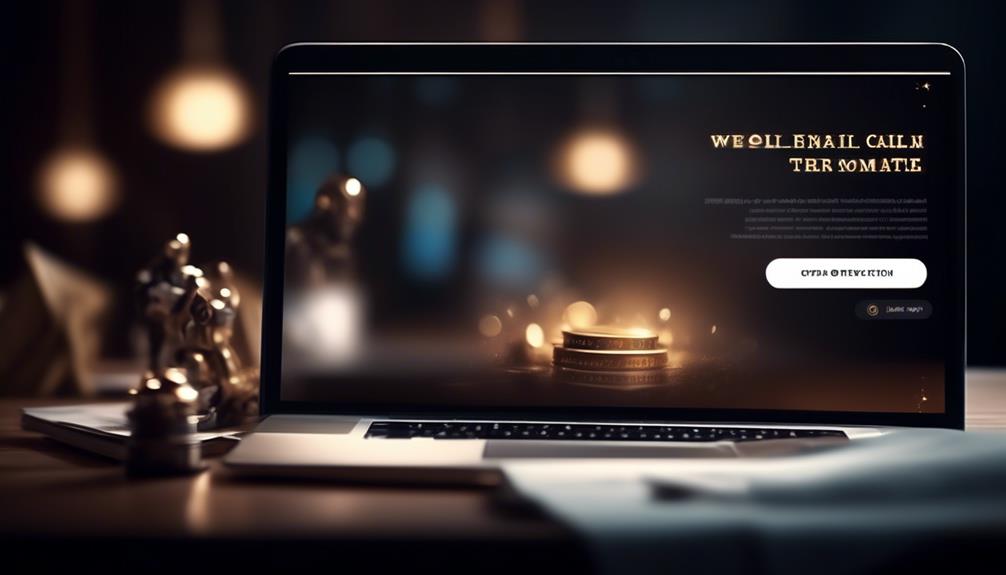
After empathetically acknowledging a missed appointment, the next crucial step is to pivot to the subtopic of 'Tips for Writing an Effective Email' by offering practical guidance on creating impactful and engaging email content.
When crafting an effective email, start with a concise subject line that encapsulates the email's essence. This ensures that the recipient grasps the purpose at first glance.
A professional and friendly greeting sets a positive tone, creating a welcoming atmosphere for the reader. In the opening paragraph, clearly state the purpose of the email to immediately capture the recipient's attention.
Keep the content focused and organized, ensuring easy readability and understanding. Use paragraphs and bullet points to structure the email effectively.
Conclude with a polite and clear call to action, indicating the next steps or expectations. By following these tips, you can create emails that engage your prospects or clients, respect their time, and effectively convey your message.
Incorporating these strategies into your email writing will help you maximize the impact of your communication and ultimately enhance your professional relationships.
No-Show Email Template Examples
We can effectively address missed appointments by utilizing a variety of no-show email templates. These templates include general, missed call, follow-up, reschedule, and value proposition templates.
For the general template, a polite and concise message expressing disappointment about the missed meeting and offering a rescheduling option can be sent.
If a phone call was missed, a missed call template can be used to express concern and provide alternative ways to connect.
A follow-up email can be effective to re-engage with the prospect, providing additional value or information to encourage a response.
The reschedule template can be used to suggest new meeting times and express understanding for the inconvenience caused.
Lastly, a value proposition template can be employed to emphasize the benefits of the appointment and encourage the prospect to reschedule.
These examples showcase the effective use of different templates you can use when a prospect has missed a meeting. It's essential to send one of these templates in a timely manner to maintain communication and increase the likelihood of rescheduling.
How to Automate Email Responses

Automating email responses revolutionizes our communication strategy by enhancing efficiency and maintaining a consistent, personalized approach. By using email automation tools like Text Blaze, we can streamline the process and increase productivity. Customizable variables allow for personalization, ensuring that each automated email feels tailored to individual preferences. This not only saves time and effort but also reduces errors and typos in responses. Here's a comparison of how automated email responses differ from manual ones:
| Automated Email Response | Manual Email Response |
|---|---|
| Saves time and effort | Time-consuming |
| Ensures consistency | Prone to errors |
| Personalized | Generic |
Automating email responses also allows for quick and efficient communication. It's as easy as creating and scheduling templates for various scenarios such as meeting agendas, follow-ups after a phone call, or rescheduling a missed appointment. This ensures that important messages are sent at the right time, without the need for manual intervention. With automation, we can focus on high-value tasks while still maintaining a personalized touch in our email communication.
Preventing No-Show Meetings
To minimize the occurrence of no-show meetings, timely reminders and clear communication are essential for ensuring attendee commitment and engagement. Sending out reminders a day before and an hour prior to the meeting can help attendees prioritize and remember the appointment.
Implementing appointment software like Google Calendar or Calendly can streamline scheduling and reduce no-shows. It's also crucial to establish clear communication regarding the value and purpose of the meeting to emphasize its importance.
Utilizing email templates to professionally follow up with no-shows is essential. These templates should provide options to reschedule and maintain the business relationship, as well as express understanding if there was a legitimate reason for the no-show.
It's also important to consider offering alternative meeting formats, such as video or phone calls, to accommodate diverse preferences and reduce the likelihood of no-shows.
Frequently Asked Questions
How Do You Write an Email for a No-Show Meeting?
We address missed meetings by sending a concise and empathetic email expressing our understanding of the situation. We offer alternative meeting times and emphasize the value of the appointment to the prospect. This approach maintains professionalism and shows our commitment to their needs.
It's crucial to remain calm and understanding, while also stressing the importance of the meeting. This approach helps to foster positive relationships and ensures that prospects feel valued.
How Do You Say No-Show Professionally?
When we address a no-show professionally, we emphasize empathy, offer solutions, and focus on the value of the meeting or appointment.
Our approach maintains a positive and understanding tone, expressing the importance of the engagement and the impact of the absence.
How Do You Email Someone Who Is a No-Show?
When someone doesn't show up, we reach out with a polite and understanding email. We emphasize the missed opportunity to connect and express our willingness to reschedule. This keeps the door open for future interactions and maintains professional relations.
It's important to strike a balance between being courteous and firm to convey the impact of the no-show while leaving the possibility for a future meeting.
How Do You Send a No-Show Message?
We send a no-show message by addressing the situation with empathy, offering alternative options, and emphasizing the value of the missed interaction. It's essential to remain calm, express understanding, and provide clear instructions for next steps. This ensures effective communication with the prospect and increases the likelihood of a positive outcome.
Using templates saves time, maintains consistency, and allows for customization, enhancing productivity and reducing errors.
Conclusion
So there you have it, folks. With the power of no-show email templates, you can turn missed meetings into opportunities. Remember to keep it professional, offer alternatives, and show understanding.
And if all else fails, automate those responses and free up your time for more important things – like catching up on your favorite TV show. Happy emailing!
Natali – Editor in Chief (Strategy and Mastery, AI Expert) Natali, our Editor in Chief, is the driving force behind our content’s strategic direction. With a keen eye for detail and a deep understanding of market trends, Natali ensures that our content is top-notch and strategically aligned with our client’s goals. Her expertise in AI helps to seamlessly integrate advanced technology into our marketing strategies, pushing the boundaries of conventional marketing.
-

 Email Automation1 month ago
Email Automation1 month agoAutomated Email Marketing 101: A Beginner's Tutorial
-

 Email Warmup1 month ago
Email Warmup1 month agoWarm Follow-Up Email
-

 Email Design Hub2 months ago
Email Design Hub2 months ago3 Essential Tools for Email Marketing Design Success
-

 Email Marketing1 month ago
Email Marketing1 month agoWhat Is Email Marketing Advantages and Disadvantages
-

 Email Marketing1 month ago
Email Marketing1 month agoWhy Email Marketing Is Effective
-

 Email Template1 month ago
Email Template1 month agoCrafting the Perfect Book Club Invitation Email Template
-

 Search Engine Optimization1 month ago
Search Engine Optimization1 month agoSEO Checklist: Enhance Your Site’s Performance
-

 Email Marketing1 month ago
Email Marketing1 month agoDoes Email Marketing Work in 2024





















